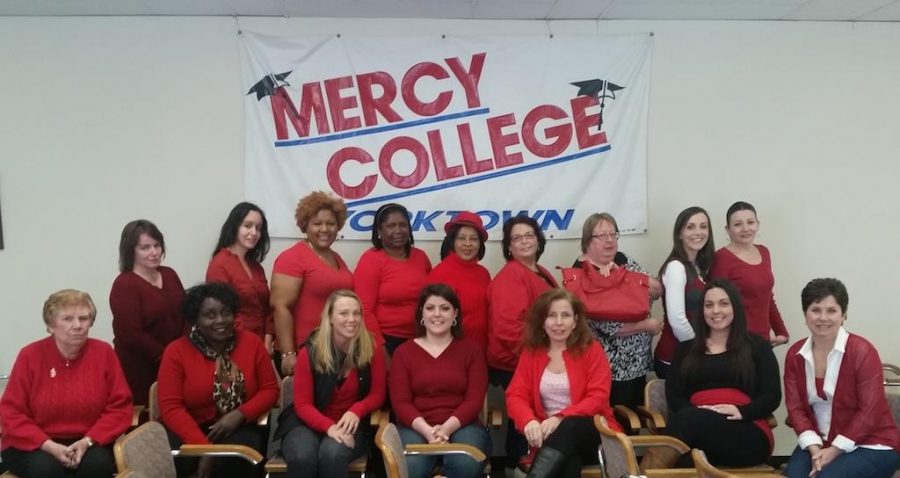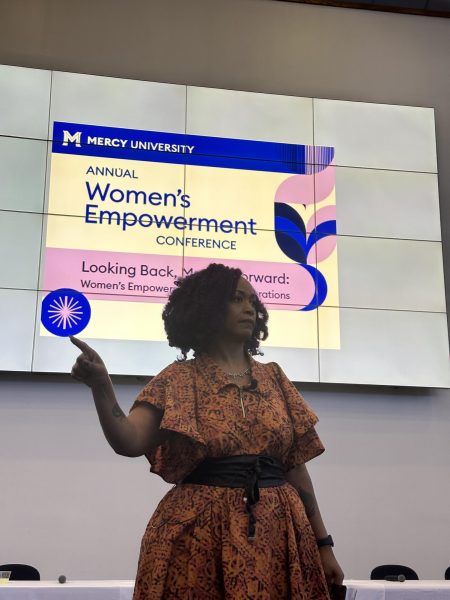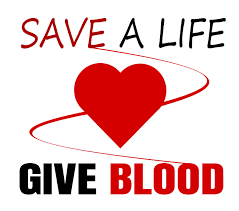February Heart Month At Mercy
March 17, 2015
February is National Heart Month and even with it being a short month, Mercy College raised awareness for a great cause all month.
The Wellness Programs, American Heart Association, Whole Foods Market, and Westchester Medical Center joined together to create an event that took place Feb. 25. Not only could people learn about heart health, but the Go Red for Women campaign, the importance of knowing CPR and signs of heart disease and the effects of healthy eating as well.
Katarina Weigel, a nursing student at Pace University, came to talk about her journey after suffering from cardiac arrest at the age of 15. During volleyball practice one day, she collapsed in the middle of the gym, and her teammates and coaches rushed to her side. She was rushed to the hospital where she was diagnosed with Catecholaminergic Polymorphic Ventricular Tachycardia (CPVT).
CPVT is a rhythm disorder of the ventricles of the heart and usually occurs in genetically predisposed individuals. As the heart rate increases in response to physical activity or emotional stress, it can trigger an abnormally fast and irregular heartbeat, known as ventricular tachycardia. If CPVT isn’t recognized and treated, an episode of ventricular tachycardia occurs, it can cause the heart to stop beating which is also known as cardiac arrest, leading to death.
Weigel was provided with an Implantable Cardioverter Defibrillator (ICD). An ICD is a battery-powered device that is placed under the skin and keeps track of your heartrate. Thin wires are connected to the heart and if there is any abnormal heart rhythm, the device will deliver an electric shock to restore normal heartbeat. If the heartbeat is to slow, newer ICDs will double as a pacemaker and stimulate the heart to beat normally. She has to get it changed between every eight and ten years.
“I really push young students to learn CPR; it’s a simple skill that can save many lives,” Weigel expressed. “We need to make a change and educate people in the importance of CPR. I am a living example that CPR does in fact work.”
Weigel spoke to over 100 people who attended this event in the Rotunda. After she shared her story, Dr. Tanya Dutta, a cardiologist from Westchester Medical Center, gave tips on how to keep a healthy heart and some information on heart disease.
Heart disease, also known as coronary heart disease, is used to describe several problems related to plaque buildup in the walls of the arteries. This is the number one cause of death in the United States killing nearly 787,000 people in 2011 alone.
An estimated 43 million women in the U.S. are affected by heart disease, but it effects just as many men.
Not only where there tips from Westchester Medical Center on keeping a healthy heart, and tips on healthy eating from Whole Foods, and tips but anyone who attended the event got hands on experience of hands only CPR.
“The hands on CPR was useful, it’s not something everyone knows, I wouldn’t have a problem learning and getting certified, if I could help someone,” Jack Ramirez, a senior Behavioral Science major, mentioned after taking part in the hands on activity.
The American Heart Association has a campaign called “Go Red for Women” which raises awareness for heart disease and stroke. This year, they had something called “Red Dress Collection 2015” to help raise even more awareness. Mercy didn’t have anything this extravagant, however on National Wear Red Day, there were red shirts everywhere.
Normally campuses are filled with Mercy Blue on Fridays, some say it was nice to see a difference.
Junior Behavioral Science major, Kiersten Ettinger, wore red on Feb. 6 along with so many others on campus.
“It is always nice to support a cause that we as Americans struggle with. It was fun seeing everyone pull out their best to bring awareness to promote a healthy heart, and seeing red for a day instead of blue.”
Even with February being a short month, Mercy wore red, and raised awareness to over 100 people on campus about heart health. Weigel encouraged people to learn and get certified in CPR, and the American Red Cross offers classes for First Aid and CPR/AED training for that, to anyone is interested. She is an example of how CPR does work and how it can save someone’s life.

















